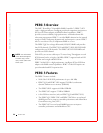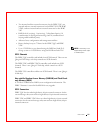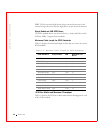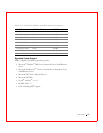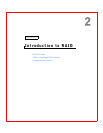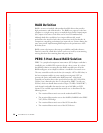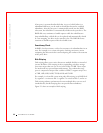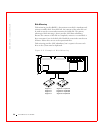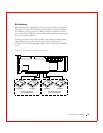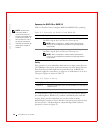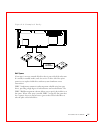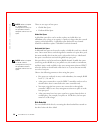
Introduction to RAID 31
• The number of SCSI channels and SCSI hard drives
Components and Features
RAID versions, or levels, are specifications that describe a system for
ensuring the availability and stability of data stored on large disk
subsystems. A RAID system can be implemented in a number of different
levels). PERC 3 supports RAID levels 0, 1, 5, 10 (1+0), and 50 (5+0).
Physical Array
A RAID array is a collection of physical disk drives governed by the RAID
management software. A RAID array appears to the host computer as one or
more logical drives.
Logical Drive
A logical drive is a partition in a physical array of disks that is made up of
contiguous data segments on the physical disks. A logical drive can consist
of an entire physical array, more than one entire physical array, a part of an
array, parts of more than one array, or a combination of any two of these
conditions.
Fault Tolerance
Fault tolerance is the capability of the subsystem to undergo a single failure
without compromising data integrity, and processing capability. The RAID
controller provides this support through redundant arrays in RAID levels 1,
5, 10 and 50. The system can still work properly even with a single disk
failure in an array, through performance can be degraded to some extent.
Fault tolerance is often associated with system availability (high mean time
between failure, MTFB) because it allows the system to be available during
the failures. However, this means it is also important for the system to be
available during the repair of the problem. To make this possible, PERC 3
supports hot spare disks, and the auto-rebuild feature.




